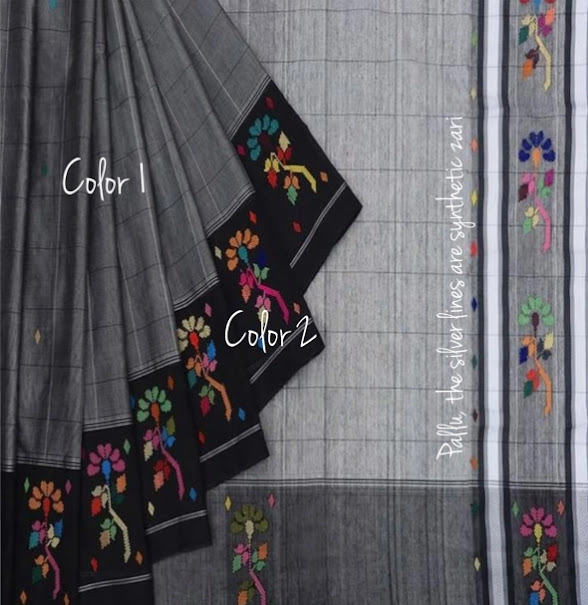The Chedi Butta Weave
A weave from Tirunelveli
The extra weft design in the picture is from Veeravanallur, Tirunelvelli area and is called Chedi Butta (Since it resembles a small plant). We found this saree in Gaatha Handicrafts page under Sungudi category and how they are revived by a project called Nool in Madurai, with some gut wrenching pics of the Saurastrian weaver couple Aatma Rao and Vairamani. In 1600s the Naickers of Madurai invited these Saurastrian weavers from Gujarat to weave the royal wear. We gather that today there are some 1500 of these Saurastrian weaver families living in Kaithari Nagar, Nilaiyur, Madurai.
However, while looking for more information on this weave, we found that few saurashtrian weavers are still present in Veeravanallur and continue to weave this saree. Upon asking about the saree, we came to know about the variants in it.
There are two types in this saree
- Cotton Body with Art silk checks
- Art silk mix in the body
The price of the saree depends on the the type of the saree. No difference can be found out in a picture of art silk and cotton saree. However, the texture of the saree varies when seen in person. Also, there are two variants in a chedi butta saree.
1. Type -1 : Two Color Mix. The body and the border will have different color. (Ref Below)
 |
| Source:Vivarang |
2. Type -2 : Single color Saree. These type sarees have uniform color spread in the body and the border (Ref Below)
The weaving charges are more for type-2, hence there’ll be price difference in both the sarees.
When we confronted a person who used to weave this saree, he told us that he took up a different profession as he could not support his family through the wages earned by weaving these sarees. As a result, very less weavers are involved in weaving this saree. Most of the weavers work for a master crafts person. In comparison to the amount of the time and energy they invest in making one saree, the returns are always insufficient to run their households.




Comments
Post a Comment